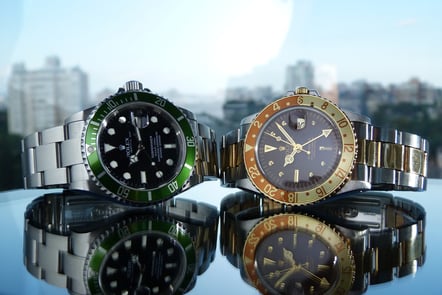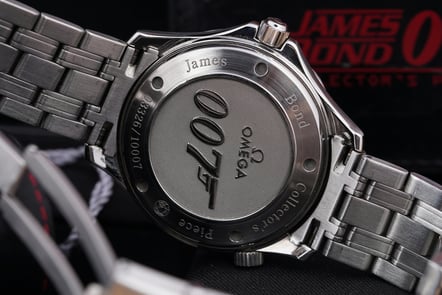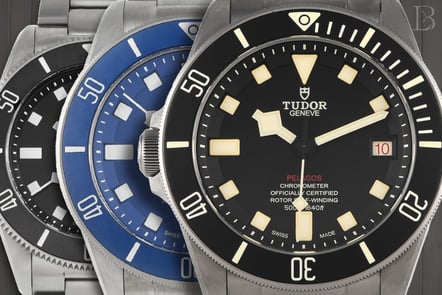The History of the Dive Watch (And Why It Still Matters Today)
Dive into the fascinating world of underwater timekeeping with our guide to the history of the dive watch. From Rolex’s ground-breaking Oyster case to the iconic Submariner and Fifty Fathoms, discover how these rugged timepieces evolved from essential diving tools into everyday style icons. Learn why dive watches still matter today, even if your deepest dive is into a pint at the pub.
5/2/20254 min read


In a world where you can check the time from your phone, your fridge, or even your vacuum cleaner (yep, smart everything), you might wonder—why are dive watches still a thing? They were made to survive the crushing depths of the ocean, and yet most of them never see more than a splash of sink water or a poolside selfie.
But dive watches endure—and not just because they look ridiculously cool. They have a rich, action-packed history, and their rugged, no-nonsense style has made them one of the most beloved types of wristwatches ever created.
Let’s take a plunge into the history of the dive watch, and explore why it still makes waves today.
The Early Days: Waterproof? Not Quite.
Before the 20th century, water was the natural enemy of all things mechanical—especially watches. If you wanted a timepiece that could survive a drizzle, let alone a dive, you were out of luck.
That began to change in 1926, when Rolex introduced the Oyster case—a revolutionary design that sealed the movement inside a watertight chamber. It was put to the test when Mercedes Gleitze swam the English Channel wearing one. Spoiler alert: the watch survived.
This was the first real step toward creating a timepiece that could go where no watch had gone before.
The Golden Age: 1950s Deep Dive
The real explosion of dive watches came in the 1950s, and for good reason: scuba diving had just gone mainstream. Thanks to Jacques Cousteau and his Aqua-Lung, more people than ever were exploring the underwater world—and they needed reliable tools to stay alive down there.
Watchmakers jumped at the challenge.
1953: Rolex Submariner – The OG. Water resistant to 100 meters at launch (and now much deeper), it became the archetype of the modern dive watch. Worn by everyone from professional divers to James Bond.
1953: Blancpain Fifty Fathoms – Released around the same time, this watch was developed with French combat divers in mind. It introduced features like a unidirectional bezel and anti-magnetic properties.
1957: Omega Seamaster 300 – Another big name enters the chat. Omega’s answer to the diving boom offered durability and legibility with that signature Omega flair.
These weren’t fashion statements. They were survival gear, tested in the most extreme environments imaginable.
Features That Made a Splash
To be considered a true dive watch (as defined by ISO 6425), a watch needs:
Water resistance of at least 100 meters (though many go far deeper)
A unidirectional bezel to track dive time safely
Luminous hands and markers for visibility in murky waters
A secure, corrosion-resistant case and strap
And ideally, a screw-down crown and case back for extra sealing
These specs weren’t marketing gimmicks—they were designed to save lives. And many are still standard on dive watches today.
Why Do We Still Love Dive Watches?
Here’s the truth: most people who own a dive watch have never gone diving. But that doesn’t matter. Dive watches are the Swiss Army knives of the watch world—tough, versatile, and stylish in just about any setting.
Why do they still matter?
Durability: Dive watches are built like tanks. Whether you’re hiking, swimming, or just clumsy, they can take a beating.
Legibility: Big, bold dials and lume-heavy hands make them super easy to read—underwater or in a dim bar.
Iconic style: That rotating bezel and chunky case have become a timeless aesthetic. It works with a wetsuit, sure—but also with jeans, a tee, or even a blazer.
Legacy: Owning a dive watch is like strapping a piece of adventure history to your wrist. It’s James Bond. It’s Cousteau. It’s that Indiana Jones feeling of being ready for anything.
Modern Dive Watches: The Best of Both Worlds
Today’s dive watches balance form and function better than ever. You’ve got:
Luxury divers like the Tudor Pelagos or the Omega Planet Ocean
Affordable icons like the Seiko SKX (RIP) or its spiritual successors
Indie and microbrand heroes from the likes of Baltic, Zelos, and Unimatic
Even smart dive watches that blend tradition with tech
Whether you’re a desk diver or a certified scuba junkie, there’s a dive watch out there for you.
Final Thoughts: Deeper Than Just Style
Dive watches are more than relics from a bygone era—they’re symbols of exploration, resilience, and style that never sinks. In a world that’s gone increasingly digital and disposable, there’s something reassuring about a mechanical marvel that was made to survive the ocean’s crushing pressure.
So no, you don’t need a dive watch.
But once you wear one, you might just wonder how you ever lived without it.






